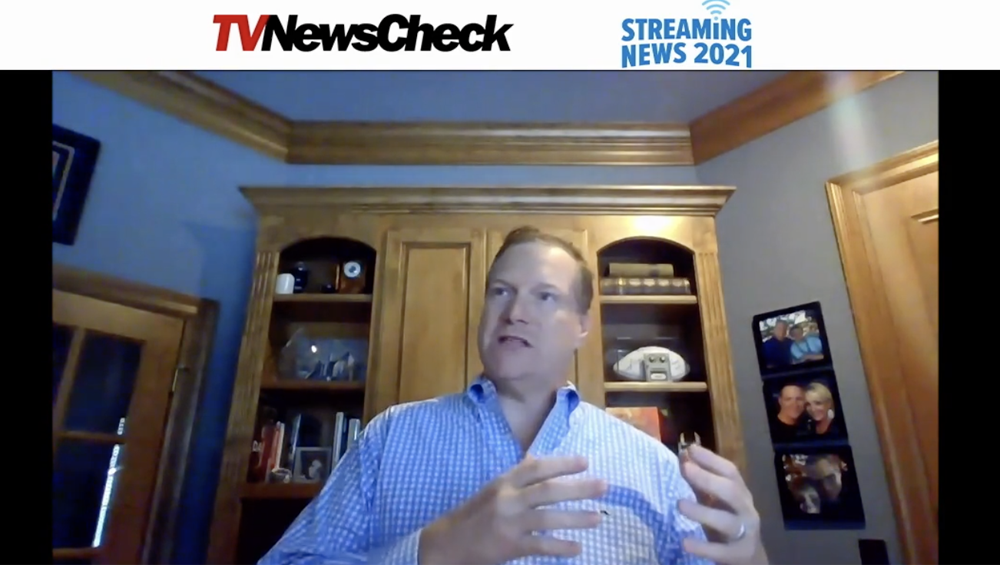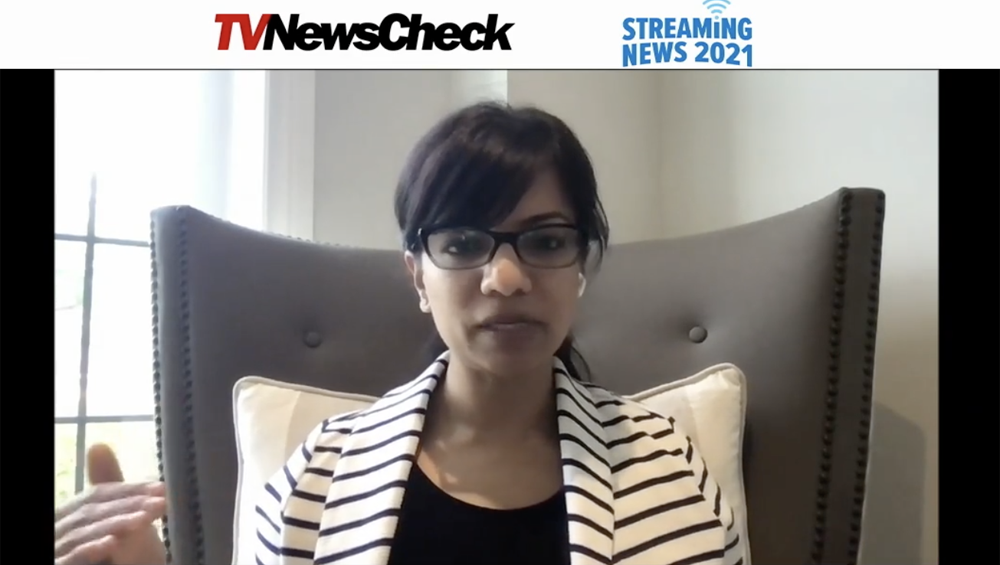
Advertisers Adopt ‘Holistic’ Approach On Streaming

As it becomes easier to track conversion rates for ads on a broadcaster’s digital platform, marketers are earmarking more of their budgets for digital.
In some cases, advertisers are scrapping linear ads altogether in favor of digital, but participants in the Best Practices for Generating Revenue panel of TVNewsCheck’s Streaming News 2021 event on Wednesday suggested that a more holistic approach with coordinated advertising on the different platforms can deliver better results for advertisers.
At the same time, broadcasters are also bringing in revenue with subscription services. Either way, the ability to gather data on audience behavior shines a light on what’s working.
Maggie Drake said The E.W. Scripps Co., where she is senior director, OTT revenue, is starting to see advertisers gravitate toward digital and away from linear ads. Recently, she said, two buyers pulled linear ads in order to concentrate on digital ad spend.
But not all advertisers are going to that extreme. In the last three years, larger agencies and buyers have been focused more on a holistic approach that’s not just dedicated to broadcast or streaming or pre-roll, but rather all of those “lumped together,” she said. “People want to know what’s working and not working. That’s why so many buyers are gravitating to OTT.”

Christian Divino
Christian Divino, VP, addressable sales and strategy for Disney Advertising Sales Local, said it’s important for advertisers to understand that those who choose a linear-only approach will have a harder time reaching younger viewers, while a digital-only approach won’t reach people who tune in for newscasts.
“Streaming is critical to linear sales, but the reverse is also true,” he said. “The two work in concert.”
And Cox Media Group SVP of Digital Joe Weir said the way buyers are purchasing linear and digital ads is starting to converge. As that continues, he said, a common metric or measurement will emerge.
But often, decisions on where to spend ad dollars are made in times of diminished budgets.
Drake said buyers might be in a position of only having a certain budget and therefore be uncertain about what platform will give the best return on investment. They’re saying, “where do I need to be? Where should I put my money? And they think it’s one. But it’s not,” Drake said.
Weir said brands get stronger when they advertise on both broadcast and digital. “They empower each other.”.

Joe Weir
Advertisers can take advantage of unique features associated with the digital platform to innovate and experiment with different messaging, Weir added.
Drake said one of the approaches Scripps is taking to ensure the news outlet is accessible to viewers is partnering with subscription video on demand companies. She compared it to “loss leader” methods used by large chain stores.
“There’s some stuff we don’t make any money on, but we need to do,” she said.
And CBC is offering a membership model in which a premium membership provides an ad-free experience and extra streaming content, said Roma Kojima, senior director, customer success and data operations at CBC.
Broadcasters have also seen a slight uptick in the use of QR codes in advertisements.
“There has to be an offer, something in it for the user to make them want to grab their phone and scan the code. If it’s just information they’ll Google it, but for $10 off, I’d scan it,” Drake said.
Those QR codes create an opportunity to add a new layer of personalization to advertising, Divino said.
And Disney is looking at other ways to shift advertising approaches to a “consumer-first” ad experience so that there is “less disruption to the viewer, and in theory they should be more personalized and relevant,” he said.
He said an approach that places the consumer first will result in ad breaks that are less disruptive and still provide utility to the viewer.
“That has to be part of the north star as these types of products continue to be added,” Divino said.

Roma Kojima
And when it comes to ads, marketers are increasingly interested in obtaining first-party data directly from customers. “It’s a huge focus going forward,” Kojima said.
Every time the broadcaster asks for personal data, she said, it’s important to “make the case for each of those microtransactions” in such a way the user receives something worthwhile in the moment as well as an overall improvement in user experience over time.
This type of first-party data collection is interesting for a number of reasons, Kojima explained. There are questions about how much data can be collected, how the exchange is managed, how the privacy is protected and how the “right message is placed in front of the right set of eyeballs at the right time,” she said.
Of course, data is a huge driver in audience targeting. According to Divino, in the last year, the number of campaigns that used data to target audience has increased by around 55%. “This is a trajectory and a ride we’re going to be on for a while, or this may just become a norm.”
Read another Streaming News 2021 story here.
Watch TVN’s Streaming News 2021 panels here.
































Comments (0)